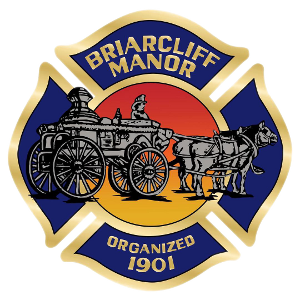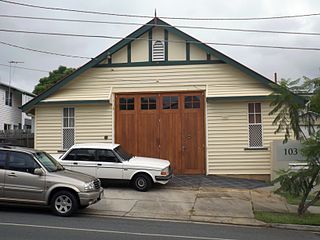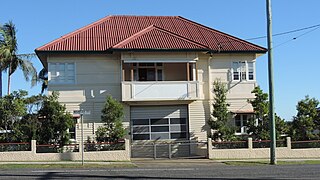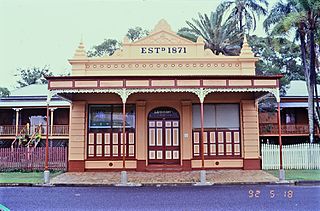A fire engine is a road vehicle that functions as a firefighting apparatus. The primary purposes of a fire engine include transporting firefighters and water to an incident as well as carrying equipment for firefighting operations. Some fire engines have specialized functions, such as wildfire suppression and aircraft rescue and firefighting, and may also carry equipment for technical rescue.

The Green Goddess is the colloquial name for the RLHZ Self Propelled Pump manufactured by Bedford Vehicles, a fire engine used originally by the Auxiliary Fire Service (AFS), and latterly held in reserve by the Home Office until 2004, and available when required to deal with exceptional events, including being operated by the British Armed Forces during fire-fighters’ strikes. These green-painted vehicles were built between 1953 and 1956 for the AFS. The design was based on a Bedford RL series British military truck.

The Auxiliary Fire Service (AFS) was first formed in 1938 in Great Britain as part of the Civil Defence Service. Its role was to supplement the work of brigades at local level. In this job it was hampered severely by the incompatibility of equipment used by these different brigades – most importantly the lack of a standard size of hydrant valve. The Auxiliary Fire Service and the local brigades were superseded in August 1941 by the National Fire Service. After the war the AFS was reformed alongside the Civil Defence Corps, forming part of the UK's planned emergency response to a nuclear attack. It was disbanded in the UK in 1968.

False Alarms is a 1936 short subject directed by Del Lord starring American slapstick comedy team The Three Stooges. It is the 17th entry in the series released by Columbia Pictures starring the comedians, who released 190 shorts for the studio between 1934 and 1959.
Firefighting is the act of extinguishing destructive fires. A firefighter fights these fires with the intent to prevent destruction of life, property and the environment. Firefighting is a highly technical profession, which requires years of training and education in order to become proficient. A fire can rapidly spread and endanger many lives; however, with modern firefighting techniques, catastrophe can usually be avoided. To help prevent fires from starting, a firefighter's duties include public education and conducting fire inspections. Because firefighters are often the first responders to victims in critical conditions, firefighters often also provide basic life support as emergency medical technicians or advanced life support as licensed paramedics. Firefighters make up one of the major emergency services, along with the emergency medical service, the police, and many others.

Pyronaut is a specialised form of fireboat known as a fire-float. It was built in 1934 by Charles Hill & Sons Ltd., Albion Dock Bristol, Yard No. 208. Registered number 333833. She is owned by Bristol Museums and based at M Shed in Bristol's Floating Harbour.

Monmouth Fire and Rescue Station is located on the Rockfield Road, Monmouth, Wales. The station looks after Monmouth and its surrounding area, and is part of the South Wales Fire and Rescue Service. There is currently one Retained Watch.

The Great New York City Fire of 1845 broke out on July 19, 1845, in Lower Manhattan, New York City. The fire started in a whale oil and candle manufacturing establishment and quickly spread to other wooden structures. It reached a warehouse on Broad Street where combustible saltpeter was stored and caused a massive explosion that spread the fire even farther.

The Briarcliff Manor Fire Department (BMFD) provides fire protection and emergency medical services to the village of Briarcliff Manor, New York and its hamlet Scarborough. The volunteer fire department also serves unincorporated areas of Ossining and Mount Pleasant. The fire department has three fire companies, two stations, and four fire engines. Its engines include three pumpers and a tower-ladder; the department also maintains other vehicles, including a heavy rescue vehicle. The Briarcliff Manor Fire Department Ambulance Corps provides emergency medical transport with two ambulances. The fire department is headquartered at the Briarcliff Manor Village Hall, with its other station in Scarborough, on Scarborough Road.

Balmoral Fire Station is a heritage-listed fire station at 105 Pashen Street, Morningside, Queensland, Australia. It was designed by architects Atkinson and Conrad and built from c. 1926 to 1929 by C. King. It was added to the Queensland Heritage Register on 26 November 1999.

Wynnum Fire Station is a heritage-listed former fire station at 39 Mountjoy Terrace, Wynnum, City of Brisbane, Queensland, Australia. It was designed by Atkinson & Conrad and built from 1922 to 1938. It was added to the Queensland Heritage Register on 28 May 1999.

Nundah Fire Station is a heritage-listed former fire station at 7 Union Street, Nundah, City of Brisbane, Queensland, Australia. It was designed by Atkinson & Conrad and built in 1936 by T F Woollam. It was added to the Queensland Heritage Register on 26 March 1999.
The Belfast Fire Brigade came into existence in 1800, and until 1861 was managed jointly with the local police service. It then provided a dedicated firefighting service to the people of the city of Belfast until its amalgamation with the Northern Ireland Fire Authority on 1 October 1973, when it became the Fire Authority for Northern Ireland, today the Northern Ireland Fire and Rescue Service.

Redcliffe Fire Station is a heritage-listed former fire station at 395 Oxley Avenue, Redcliffe, Moreton Bay Region, Queensland, Australia. It was built from 1948 to 1949 by Alex Smith. It was added to the Queensland Heritage Register on 6 September 2005.

Brennan & Geraghtys Store is a heritage-listed shop and National Trust-run museum at 62-66 Lennox Street, Maryborough, Fraser Coast Region, Queensland, Australia. It was built from c. 1864 to 1904. It is also known as Geraghty's Store. It was added to the Queensland Heritage Register on 21 October 1992.

Dalby Fire Station is a heritage-listed fire station at 21 New Street, Dalby, Western Downs Region, Queensland, Australia. It was designed by Matthew Williamson and built in 1935 by George Ficken. It was added to the Queensland Heritage Register on 8 October 2010.

The electric fire engine is a fire engine with a water pump, used to distribute water to put out a fire, operated by an electric motor. Electric fire engines were first proposed in the 19th century to replace the steam pumpers used for firefighting. The electric motor was claimed to be simpler, cleaner, and faster in operation, would save money, and require less maintenance than the steam fire engine. Contemporary battery-operated models also exist.

Number 470 Fire Bell is a heritage-listed fire bell at 56 Suttor Street, West Bathurst, Bathurst Region, New South Wales, Australia. It was designed by John C. Wilson and built in 1855 by Gorbals Brass and Bell Foundry, Glasgow. It is also known as Sydney Insurance Companies Fire Bell and Bathurst Fire Bell. It was added to the New South Wales State Heritage Register on 11 July 2014.

The Sauk City Fire Station, begun in 1862, housed the city's early fire department, and served as a center of the community. Today it is one of the oldest fire stations in Wisconsin. It looks much like it did in 1870 - a gable-roofed building with a hose-drying tower. It was added to the National Register of Historic Places in 1999.

The Penrith Museum of Fire is a firefighting museum that contains heritage-listed former operating and now stored for preservation fire service vehicles located at Museum Drive in the western Sydney suburb of Penrith in the City of Penrith local government area of New South Wales, Australia. The provenance of the firefighting vehicles date from 1841 to 1998. The fleet of vehicles was added to the New South Wales State Heritage Register on 25 February 2013.


















